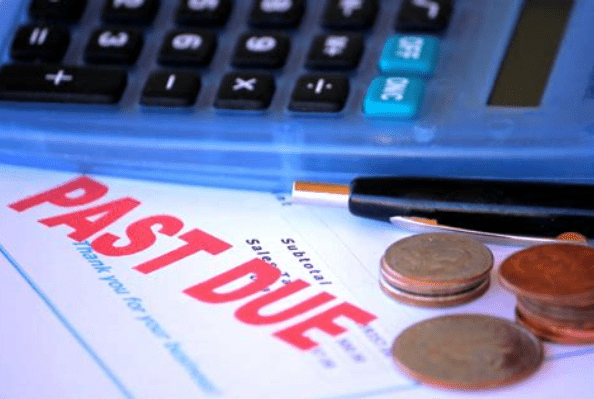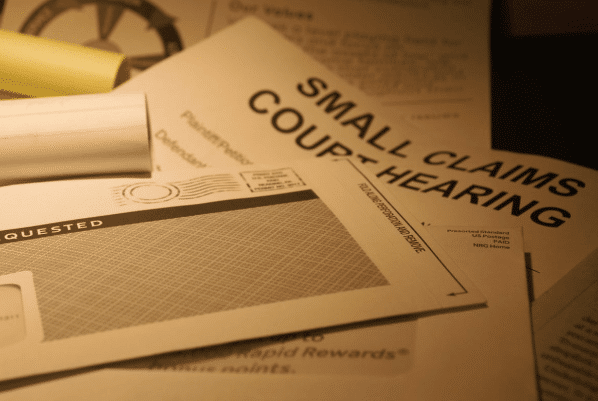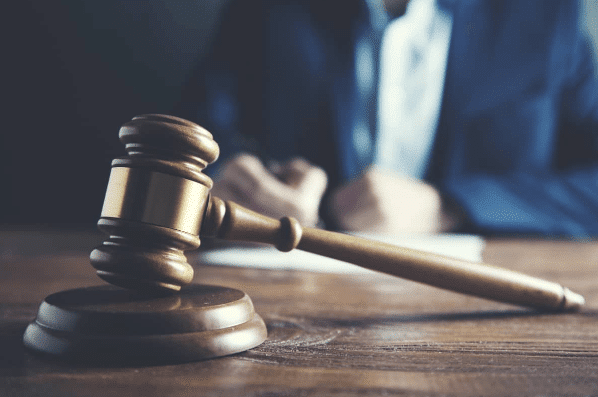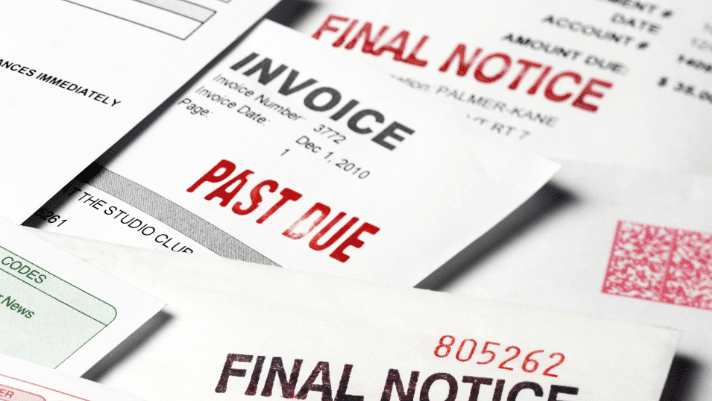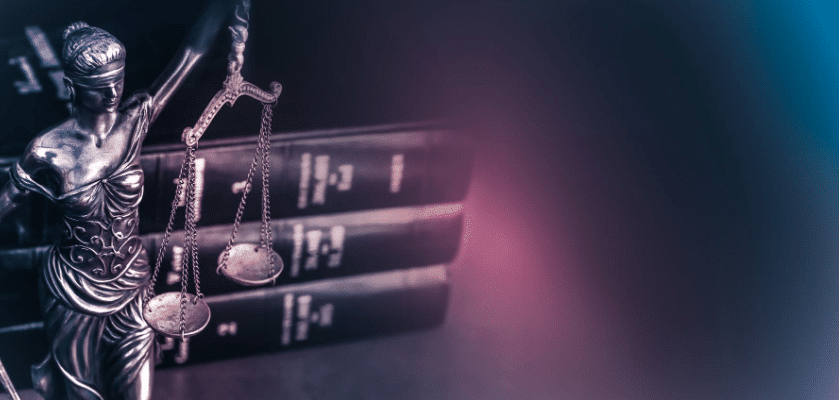Attention Minnesota residents! When facing a debt collection lawsuit in the state, remember you have 21 days to respond before defaulting. Typically, the best course of action is to provide a written Answer to both the plaintiff and the court. Simplify this process with ZumaZip, where you can generate an Answer document in a mere 15 minutes.
Minnesota stands out in the realm of debt collection lawsuits due to its unique approach. Here’s the scoop: In this state, a lawsuit can kick off with a debt collector serving a Summons and Complaint form on a defendant—often referred to as pocket filing. Here’s the kicker: There’s no legal obligation for a debt collector to file any formal document in court before serving someone with a lawsuit. This distinctive process sets Minnesota apart in the realm of debt collection litigation.
More specifically, Minnesota Rules of Civil Procedure Rule 3.01 states:
“A civil action is commenced against each defendant:
(a) when the summons is served upon that defendant; or
(b) at the date of signing a waiver of service pursuant to Rule 4.05; or
(c) when the summons is delivered for service to the sheriff in the county where the defendant resides personally, by U.S. Mail (postage prepaid), by commercial courier with proof of delivery, or by electronic means consented to by the sheriff’s office either in writing or electronically; but such delivery shall be ineffectual unless within 60 days thereafter the summons is actually served on that defendant or the first publication thereof is made.
Filing requirements are set forth in Rule 5.04, which requires filing with the court within one year after commencement for non-family cases.”
In Minnesota, being sued for debt comes with a unique twist: the creditor or debt collector initiating the lawsuit has up to a year to officially file the Summons in court. So, when you receive the Summons, it’s possible you won’t see a case number on it, and reaching out to the court clerk might not provide much clarity if the case hasn’t been filed yet.
Navigating this situation can be challenging when it comes to responding to the lawsuit.
But fear not! ZumaZip is here to assist you with your debt collection case. We’ve gathered crucial information to help you understand what to expect when facing a debt collection lawsuit. The details provided below will guide you in responding to a Summons and Complaint for debt collection in Minnesota.
Table of Contents
Deadline to Respond
Answer forms
Filing fees
Steps to Respond
What is ZumaZip?
Statute of Limitations in Minnesota
Minnesota Legal Aid Organizations
MN Court Locations
Key Takeaways
Minnesota deadline for answering a debt collection Summons
Minnesota’s Rules of Civil Procedure Rule 12.01 states:
“Defendant shall serve an answer within 21 days after service of the summons upon that defendant unless the court directs otherwise pursuant to Rule 4.043. A party served with a pleading stating a cross-claim against that party shall serve an answer thereto within 21 days after the service upon that party.”
This means you only have 21 days to respond to a debt collection lawsuit in Minnesota.
If you fail to file your Answer within 21 days, you are essentially raising the white flag of defeat and the court will probably enter a default judgment against you. Once the debt collector has that judgment, they have the right to garnish your wages and put liens on your property.
A Garnishment Summons Minnesota is sent to the debtor after a judgment has been entered, by court order, or before the case is heard and the 21 days to respond have passed. If you receive a garnishment Summons in MN, respond to it within the timeline given, detailing the funds the creditor should exempt from garnishment.
Click here to see what types of property and funds are exempt from garnishment in Minnesota.
Now, let’s take a look at an example scenario.
Let’s take a look at Sarah’s situation. She had a $790 debt with I.C Systems, but unfortunately, she defaulted on payments a year ago. When she received a Summons from I.C, she didn’t respond within the 21-day timeframe. As I.C proceeded with plans to secure a default judgment, they sent Sarah a Minnesota Garnishment Summons. Concerned about protecting her funds, Sarah reached out to her bank to confirm they had received the letter. The bank advised her to respond within 25 days, or risk I.C gaining access to all her funds unless she listed what should be exempted.
Lookout for a discovery request
When served with a Summons and Complaint in Minnesota, it’s crucial to carefully review all accompanying documents. Why? Because sometimes, a debt collection agency in Minnesota includes discovery requests along with the Summons and Complaint. These requests could require you to provide specific answers or produce certain documents.
Responding to these discovery requests is incredibly important. Failing to do so could weaken your defense, even if you’ve filed an Answer to the Complaint. For instance, if you receive a set of “Requests for Admission” and don’t respond within 30 days, they’re automatically considered admitted under the Minnesota Rules of Civil Procedure. This means you’d essentially be agreeing to the debt collection company’s version of events.
To ensure your side of the story is heard and to enable the court to consider both perspectives, it’s essential to respond promptly and thoroughly to any discovery requests you receive.
Use Minnesota Answer to Summons forms
In Minnesota, when facing a debt collection Summons, ZumaZip’s Answer Form is your go-to solution. This user-friendly tool simplifies the process, allowing you to complete the form in just 15 minutes. It covers all your bases by including your responses to each allegation from the Complaint and asserting affirmative defenses. With ZumaZip, responding to a debt collection Summons in Minnesota has never been easier.
Nevertheless, if you want to fill everything out on your own, you can use the following form from the Minnesota courts:
CIV302 – This document is Minnesota’s general Answer form for civil lawsuits such as debt collection cases. Use it to respond to a debt collection Summons and Complaint.
Minnesota courts charge Answer filing fees
In Minnesota, it’s important to note that courts typically charge a filing fee for submitting an Answer to a debt collection lawsuit. The exact amount varies depending on factors such as the county and the type of case (regular civil vs small claims). Generally, the fee ranges from $75 to $300.
To determine the specific filing fee for your case, you can visit Minnesota’s Judicial Branch website. From there, use the dropdown menus to select your county and the appropriate case category (Civil Action or Proceeding or Conciliation). The filing fee will be listed under the “First Paper Filed” category on the right side of the screen.
If you are unable to pay the filing fee, you have the option to request a fee waiver. To secure a fee waiver, you must fill out an application form and submit a copy to the court for consideration. You can qualify for a Minnesota fee waiver if you:
- Cannot afford to pay due to low income that is below 125% of the Federal poverty level.
- Receive public assistance.
- Show that you do not have the money to pay.
Receiving a fee waiver doesn’t mean you will not pay any court fees. You must read the form carefully and note which court fees qualify for the waiver.
Follow these steps to respond to a debt collection case in Minnesota
If you have been served with a Summons and Complaint form in Minnesota for an alleged debt, do not assume the allegations contained in the Complaint are accurate. You have the legal right to contest the allegations in the Complaint. In other words, you can fight back and win.
When a debt collector sues you, you must get to work formulating a response. Ignoring the Minnesota Summons and Complaint form is not recommended since the plaintiff will receive a default judgment, as we discussed before.
Follow these four steps to respond to a debt collection lawsuit in Minnesota:
- Create an Answer document.
- Respond to each allegation in the Complaint.
- Figure out if you can assert affirmative defenses.
- File the answer with the court and serve the plaintiff.
Now, let’s break down each of these four steps in detail.
1. Create an Answer document
Before you start drafting your Answer, go through the Summons and Complaint to be sure you have all the information you’ll need. The Summons notifies you of the lawsuit, and lists the parties involved in the case as well as the court that has jurisdiction over this case. The Complaint contains a list of the specific allegations, or claims, being made against you.
More specifically, the Summons and Complaint documents should contain the following, which you will need to draft your Answer document:
- Defendant’s first and last name (that’s you)
- Plaintiff’s name (the creditor or debt collector suing you)
- Plaintiff’s attorney information
- Physical address of both the defendant and the plaintiff
- Court information, including which division the case is in and the court’s address
- Case number (if the case hasn’t been filed in court yet, there will be no case number listed)
- Debt amount
You can use ZumaZip’s Answer form to compile all this information and format it in the correct, legal way. You can also fill out Minnesota’s CIV302 Answer form with the information you find in the Summons and Complaint.
2. Respond to each allegation in the Complaint
Your Answer document should include responses to each allegation listed in the Complaint. Each paragraph in your Answer should correspond with the numbered paragraph from the Complaint. There are three responses you can provide to each allegation in the Minnesota Civil Complaint form:
- Admit—this is like saying, “This is true.”
- Deny—this is like saying, “Prove it.”
- Deny due to lack of knowledge—this is like saying, “I don’t know.”
Most attorneys recommend that you deny as many allegations as you can. This gives you a stronger case, because it makes the debt collector or creditor do more work to prove their claims. If they don’t have the necessary evidence to prove everything, they might even drop the case.
Respond to each allegation in the Complaint with ZumaZip’s help—in just 15 minutes!
3. Determine whether you can assert an affirmative defense
There are certain affirmative defenses you can raise to challenge the validity or viability of the debt collector’s lawsuit. An affirmative defense is any legal reason that the plaintiff should lose their case. Here are some examples:
- Plaintiff lacks legal standing to bring suit: Lack of standing is a powerful defense. You can raise it when the debt collector has no legal basis for filing the lawsuit (there is no clear ownership of the debt or legal assignment of a debt to a debt collector). This is a fairly common defense in debt collection cases, especially when the debt has been sold and resold to multiple debt collectors.
- Failure to state a claim upon which relief may be granted: You can raise this defense if the plaintiff failed to cite a statute or the Complaint failed to state sufficient facts to constitute a viable cause of action.
- Plaintiff filed the suit after the MN statute of limitations on debt collection had expired: The statute of limitations is the time period that a debt collector or creditor can sue someone for a debt. If the debt account has been inactive for six or more years in Minnesota, the statute of limitations has passed. You can assert that the debt collector failed to file the lawsuit within the applicable statutory time period. As a result, the lawsuit could be barred from moving forward.
There are dozens of common affirmative defenses you can use in a debt collection lawsuit. Each one will strengthen your case and increase your chances of winning.
Make the right affirmative defense the right way with ZumaZip.
4. File the answer with the court and serve the plaintiff
Once you have completed your Answer, file it in the court. You can send your Answer in the mail or drop it off in person at the courthouse.
You should also serve a copy of the Answer to the attorney who is representing the debt collector or creditor suing you. Make sure you fill out a sworn statement ( affidavit of service or certificate of service) to substantiate when you served the Answer. You should have a second copy ready when the debt collection company formally files suit with a court.
ZumaZip can help you file your Answer in all 50 states.
What is Zumazip?
ZumaZip is your ultimate tool for taking on debt collectors with ease. Whether you need to respond to a debt lawsuit, send correspondence to collectors, or negotiate a settlement, ZumaZip has you covered.
Our Answer service, available through a user-friendly web app, guides you through the process step by step. We’ll ask you all the necessary questions to complete your Answer comprehensively. And to top it off, once you’re done, our team of attorneys will review your document to ensure accuracy and file it for you. With ZumaZip, fighting back against debt collectors has never been simpler.
Minnesota’s statute of limitations on debt is six years
In Minnesota, there is a statutory limitation placed on the time allowed for a creditor or debt collector to collect on an alleged outstanding debt. This time limit is known as the Minnesota debt collection statute of limitations.
Under Minnesota law, the statute of limitations to file a lawsuit for money owed due to a breach of contract is six years. This means that a creditor or debt collection company can only file a lawsuit against you within six years from the date of your last purchase or last payment. If, on the other hand, a debt collector waits too long and attempts to file a lawsuit after six years have elapsed, you can raise the MN statute of limitations on debt collection as an affirmative defense and have the case dismissed.
| Minnesota Statute of Limitations on Debt | |
| Debt Type | Deadline in Years |
| Oral | 6 |
| Written | 6 |
| Mortgage | 6 |
| Open | 6 |
| Credit Card | 6 |
| Judgment | 10 |
Source: Findlaw | |
Utilize Minnesota legal aid organizations
If you need help defending yourself in a debt collection lawsuit in Minnesota, there are organizations offering assistance at little-to-no-cost to Minnesota residents. These organizations include:
Mid-Minnesota Legal Aid
111 North Fifth Street
Suite 100
Minneapolis, MN 55403
Legal Services Advocacy Project
2324 University Avenue West
Suite 101
Midtown Commons
St. Paul, MN 55114
If you need assistance on how to best respond to a debt collection lawsuit, consider utilizing ZumaZip.
Find your Minnesota court location
There are ten judicial districts in Minnesota. Each district contains multiple trial courts comprising one or more of Minnesota’s 87 counties. The district courts are categorized into the following districts:
- First Judicial District – Carver, Dakota, Goodhue, Le Sueur, McLeod, Scott, Sibley
- Second Judicial District – Ramsey
- Third Judicial District – Dodge, Fillmore, Freeborn, Houston, Mower, Olmsted, Rice, Steele, Wabasha, Waseca, Winona
- Fourth Judicial District – Hennepin
- Fifth Judicial District – Blue Earth, Brown, Cottonwood, Faribault, Jackson, Lincoln, Lyon, Martin, Murray, Nicollet, Nobles, Pipestone, Redwood, Rock, Watonwan
- Sixth Judicial District – Carlton, Cook, Lake, St. Louis
- Seventh Judicial District – Becker, Benton, Clay, Douglas, Mille Lacs, Morrison, Otter Tail, Stearns, Todd, Wadena
- Eighth Judicial District – Big Stone, Chippewa, Grant, Kandiyohi, Lac qui Parle, Meeker, Pope, Renville, Stevens, Swift, Traverse, Wilkin, Yellow Medicine
- Ninth Judicial District – Aitkin, Beltrami, Cass, Clearwater, Crow Wing, Hubbard, Itasca, Kittson, Koochiching, Lake of the Woods, Mahnomen, Marshall, Norman, Pennington, Polk, Red Lake, Roseau
- Tenth Judicial District – Anoka, Chisago, Isanti, Kanabec, Pine, Sherburne, Washington, Wright
Need to take a trip to your courthouse or call the court clerk for assistance? Use this court directory to find your courthouse and the clerk’s phone number online.
Key Takeaways
In summary, here are the steps to take to respond to a Summons and Complaint for debt collection in Minnesota properly.
- You have 21 days to respond in Minnesota.
- Review the Summons and Complaint thoroughly to determine if the plaintiff included any Discovery Requests or other documents.
- Prepare to pay an Answer filing fee anywhere from $75-$300, depending on which county you live in.
- Create an Answer document that contains the same case information listed in the Summons and Complaint.
- Respond to each claim listed in the Complaint document.
- Research carefully to assess whether any affirmative defenses can be asserted to challenge the lawsuit.
- File your Answer with the court, and send a copy to the plaintiff.
You can win your Minnesota debt lawsuit and get debt collectors off your back. Follow the steps listed throughout this article, and your chances of winning will increase.
What is ZumaZip?
ZumaZip is a convenient solution designed to streamline your response to a debt collection lawsuit. Here’s a breakdown of what you can expect when you use ZumaZip:
Firstly, you’ll access our user-friendly web application, which guides you through the process step by step. You’ll be prompted to answer a series of questions related to your specific situation. Once you’ve completed the questionnaire, you have the option to either print out the finalized forms and mail them to the appropriate courts yourself, or you can opt to utilize ZumaZip’s services to file them on your behalf. Additionally, if you choose this option, an attorney will review your document for added peace of mind.
If you’re seeking guidance on how to effectively respond to a debt collection lawsuit, ZumaZip can provide the assistance you need. Feel free to explore our FAQs for more information on what ZumaZip has to offer.
What if I haven’t been sued yet?
If you’ve only received a collections notice, but not a lawsuit, the best way to respond is with a Debt Validation Letter. When a debt collector contacts you in any way, whether it’s by phone or mail, you can respond by formally requesting a debt validation with a Debt Validation Letter . This letter notifies the collector that you dispute the debt and forces them to provide proof you owe the debt. They can’t call you or continue collecting until they provide validation of the debt. This flowchart shows how you can use a Debt Validation Letter to win.
Get started with a Debt Validation Letter here.
How to Answer a Summons for debt collection in all 50 states
Here’s a list of guides on how to respond to a debt collection lawsuit in each state:
- Alabama
- Alaska
- Arizona
- Arkansas
- California
- Colorado
- Connecticut
- Delaware
- Florida
- Georgia
- Hawaii
- Idaho
- Illinois
- Indiana
- Iowa
- Kansas
- Kentucky
- Louisiana
- Maine
- Maryland
- Massachusetts
- Michigan
- Minnesota
- Mississippi
- Missouri
- Montana
- Nebraska
- Nevada
- New Hampshire
- New Jersey
- New Mexico
- New York
- North Carolina
- North Dakota
- Ohio
- Oklahoma
- Oregon
- Pennsylvania
- Rhode Island
- South Carolina
- South Dakota
- Tennessee
- Texas
- Utah
- Vermont; Vermont (Small Claims court)
- Virginia
- Washington
- West Virginia
- Wisconsin
- Wyoming
Guides on how to beat every debt collector
Hey there! Facing off against a debt collector can feel like a daunting challenge, but fear not! We’re here to help you navigate through it all with our handy guides designed to assist you in beating every debt collector you encounter. Whether you’re facing a new lawsuit or dealing with a persistent collector, we’ve got your back. Stay positive, stay informed, and let’s tackle this together!
- Absolute Resolutions Investments LLC
- Accredited Collection Services
- Alliance One
- Amcol Clmbia
- American Recovery Service
- Asset Acceptance LLC
- Asset Recovery Solutions
- Associated Credit Services
- Autovest LLC
- Cach LLC
- Cavalry SPV I LLC
- Cerastes LLC
- Colinfobur
- Covington Credit
- Crown Asset Management
- CTC Debt Collector
- Cypress Financial Recoveries
- Delanor Kemper & Associates
- Eagle Loan of Ohio
- Educap
- Estate Information Services
- FIA Card Services
- Forster & Garbus
- Freshview Solutions
- Fulton Friedman & Gullace LLP
- Harvest Credit Management
- Howard Lee Schiff
- Hudson & Keyse LLC
- Integras Capital Recovery LLC
- Javitch Block
- Jefferson Capital Systems LLC
- LVNV Funding
- Mannbracken
- Mariner Finance
- Medicredit
- Michael J Adams PC
- Michael J Scott
- Midland Funding LLC
- Mullooly, Jeffrey, Rooney & Flynn
- Mountain Land Collections
- MRS Associates
- National Collegiate Trust
- Nationstar Foreclosure
- Northstar Capital Acquisition
- NCEP LLC
- NRC Collection Agency
- OneMain Financial
- Palisades Collection LLC
- Pallida LLC
- Paragon Revenue Group
- Pinnacle Collections Agency
- PMAB LLC
- Portfolio Recovery Associates
- Provest Law
- PYOD LLC
- Reunion Student Loan Finance Corporation
- Revenue Group
- Regents and Associates
- RSIEH
- Salander Enterprises LLC
- Second Round Sub LLC
- Security Credit Services
- Sherman Financial Group
- Suttell and Hammer
- T-Mobile
- Transworld Systems
- Tulsa Teachers Credit Union
- UCB Collection
- Velo Law Office
- Velocity Investments
- Waypoint Resource Group
- Weinberg and Associates
- Wolpoff & Abramson
Settle your medical debt
Having a health challenge is stressful, but dealing medical debt on top of it is overwhelming. Here are some resources on how to manage medical debt.
- Am I Responsible for My Spouse’s Medical Debt?
- Do I Need a Lawyer for Medical Bills?
- Do I Need a Lawyer to Fight Medical Bill Debt?
- Does Bankruptcy Clear Medical Debt?
- How Much Do Collection Agencies Pay for Medical Debt?
- How to Find Medical Debt Forgiveness Programs
- Is There a Statute of Limitations on Medical Bills?
- Medical Debt Statute of Limitations by State
- Summoned to Court for Medical Bills — What Do I Do?
- Summoned to Court for Medical Bills? What to Do Next
Stop calls from Debt Collectors
Do you keep getting calls from an unknown number, only to realize that it’s a debt collector on the other line? If you’ve been called by any of the following numbers, chances are you have collectors coming after you, and we’ll tell you how to stop them.


























